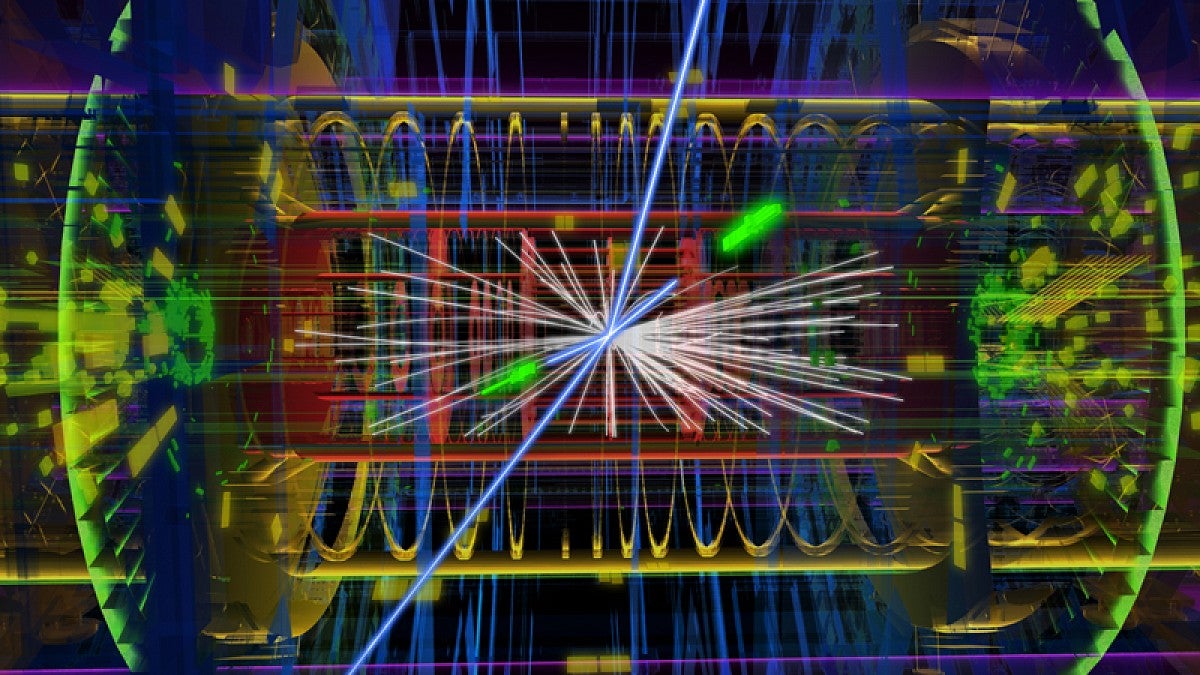As an undergraduate student, the UO’s Stephanie Majewski found herself drawn to fundamental questions about life and the universe that were being pursued by particle physicists.
In a Quack Chats pub talk Nov. 8, Majewski will give a glimpse of her research as a scientist seeking evidence of supersymmetry and dark matter in experiments at Europe’s Large Hadron Collider. She has worked at the underground particle collider, operated by the European Organization for Nuclear Research, known as CERN, in Geneva, Switzerland, for a decade.
Her talk “Lightening Up About Dark Matter” will feature colorful imagery and video. It will begin at 6 p.m. at the Ax Billy Grill at the Downtown Athletic Club, 999 Willamette St., in Eugene.
RELATED LINKS
The public is invited. Admission is free and questions are encouraged. Food and drinks will be available for purchase.
The public also is invited to join participating UO faculty members Saturday, Nov. 4, in the monthly Run with a Researcher. Simply meet up at 9 a.m. at the “O” desk on the lower level of the Erb Memorial Union. The event is free. Participants will be paired for a 3.1-mile walk or 4.5-mile run at a pace they prefer.
Quack Chats and Run with a Researcher are public outreach events of University Communications.
At the Large Hadron Collider, particle physicists are searching for clues about the universe, including the basic building blocks of matter and what forces govern their interactions, Majewski said.
“In general, this is fundamental research,” she said. “We are trying to probe the unknown, not for any particular, practical reason that we know of right now. It’s about gaining further knowledge and to try and understand what we’re all made of, how the universe is what is it today, and how it started.”
Majewski, an associate professor, is seeking evidence for supersymmetry in proton collisions using one of the collider’s primary detectors, known by the acronym ATLAS.
“Supersymmetry is the idea that all of the particles that we know about have heavier partners, somewhat similar to the relationship of matter-antimatter,” she said. “Matter and antimatter have the same mass; they mirror each other. I think of supersymmetry as a distorted mirror where the partners are much heavier than the original particles.”
If that theory is true, she said, supersymmetry may explain dark matter, which is a current goal of scientists working at CERN.
“We think that it exists, and that it is a particle,” Majewski said. “We want to know if it couples to anything that we know about already. We should be able to produce it in our accelerator and see the evidence for it.”
Majewski, who earned a bachelor’s degree in 2002 from the University of Illinois at Urbana-Champaign and a doctorate in 2007 from Stanford University, knows CERN and the ATLAS experiments well. She lived and worked at CERN for four years as a postdoctoral researcher with Brookhaven National Laboratory before joining the UO Department of Physics in 2012.
She was part of the international collaboration that confirmed the existence of the Higgs boson. As part of UO group working at the Large Hadron Collider, she has been involved in upgrades to the detector’s trigger system, which is fine-tuned to record for analysis the precise moments when particles collide. She currently is readying upgrades for a future run of the collider.
“When you study particle physics,” she said, “there is often a long delay between a discovery and its practical use. It often is the technology that is used to make the discoveries that leads to applications that benefit the public.”
Examples, she said, are the World Wide Web, which emerged from CERN technology, and a variety of medical devices used in diagnoses and treatment strategies.
—By Jim Barlow, University Communications


